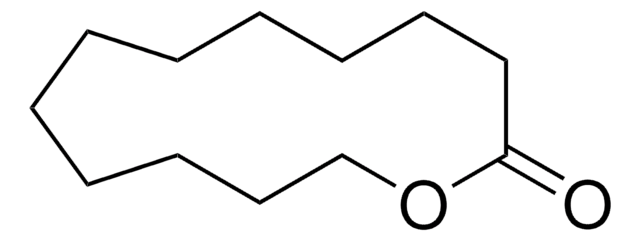Wichtige Dokumente
28-1350
Silbernitrat -Lösung
0.1 M
About This Item
Empfohlene Produkte
Form
aqueous solution
Verfügbarkeit
available only in Japan
Konzentration
0.1 M
1/10 N
Lagertemp.
15-25°C
SMILES String
[Ag]
InChI
1S/Ag.NO3/c;2-1(3)4/q+1;-1
InChIKey
SQGYOTSLMSWVJD-UHFFFAOYSA-N
Suchen Sie nach ähnlichen Produkten? Aufrufen Leitfaden zum Produktvergleich
Anwendung
- Photochemical Synthesis of Silver Nanoparticles: Silver nitrate is pivotal in the photochemical synthesis of silver nanoparticles using UV pulsed laser irradiations. The presence of surfactant additives influences the morphology and stability of the synthesized nanoparticles, which have applications in catalysis, sensing, and biomedical fields. This method provides a controlled approach to nanoparticle synthesis, essential for advanced material science and nanotechnology research (Qazi, Journal of New Materials for Electrochemical Systems, 2021).
Signalwort
Danger
H-Sätze
Gefahreneinstufungen
Aquatic Acute 1 - Aquatic Chronic 1 - Eye Irrit. 2 - Met. Corr. 1 - Repr. 1B - Skin Irrit. 2
Lagerklassenschlüssel
6.1D - Non-combustible acute toxic Cat.3 / toxic hazardous materials or hazardous materials causing chronic effects
WGK
WGK 3
Flammpunkt (°F)
Not applicable
Flammpunkt (°C)
Not applicable
Hier finden Sie alle aktuellen Versionen:
Besitzen Sie dieses Produkt bereits?
In der Dokumentenbibliothek finden Sie die Dokumentation zu den Produkten, die Sie kürzlich erworben haben.
Unser Team von Wissenschaftlern verfügt über Erfahrung in allen Forschungsbereichen einschließlich Life Science, Materialwissenschaften, chemischer Synthese, Chromatographie, Analytik und vielen mehr..
Setzen Sie sich mit dem technischen Dienst in Verbindung.





